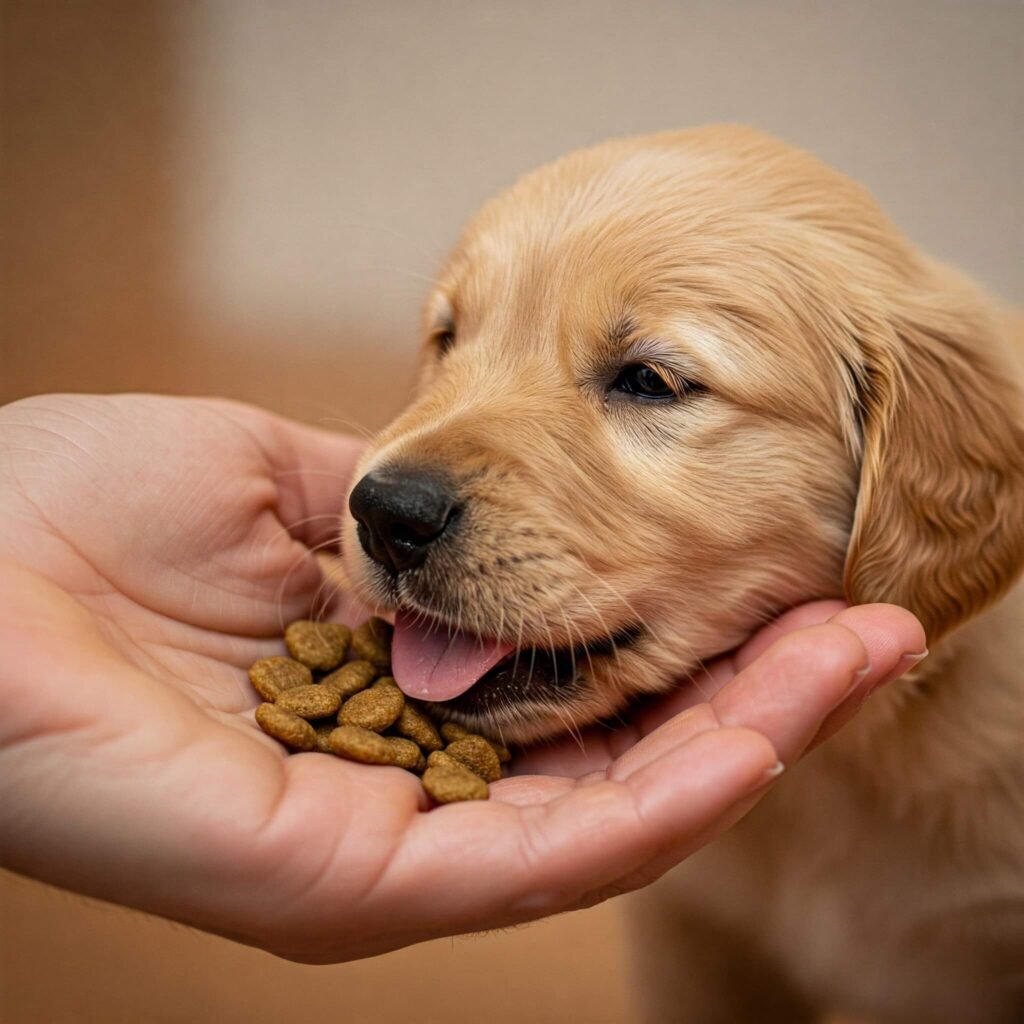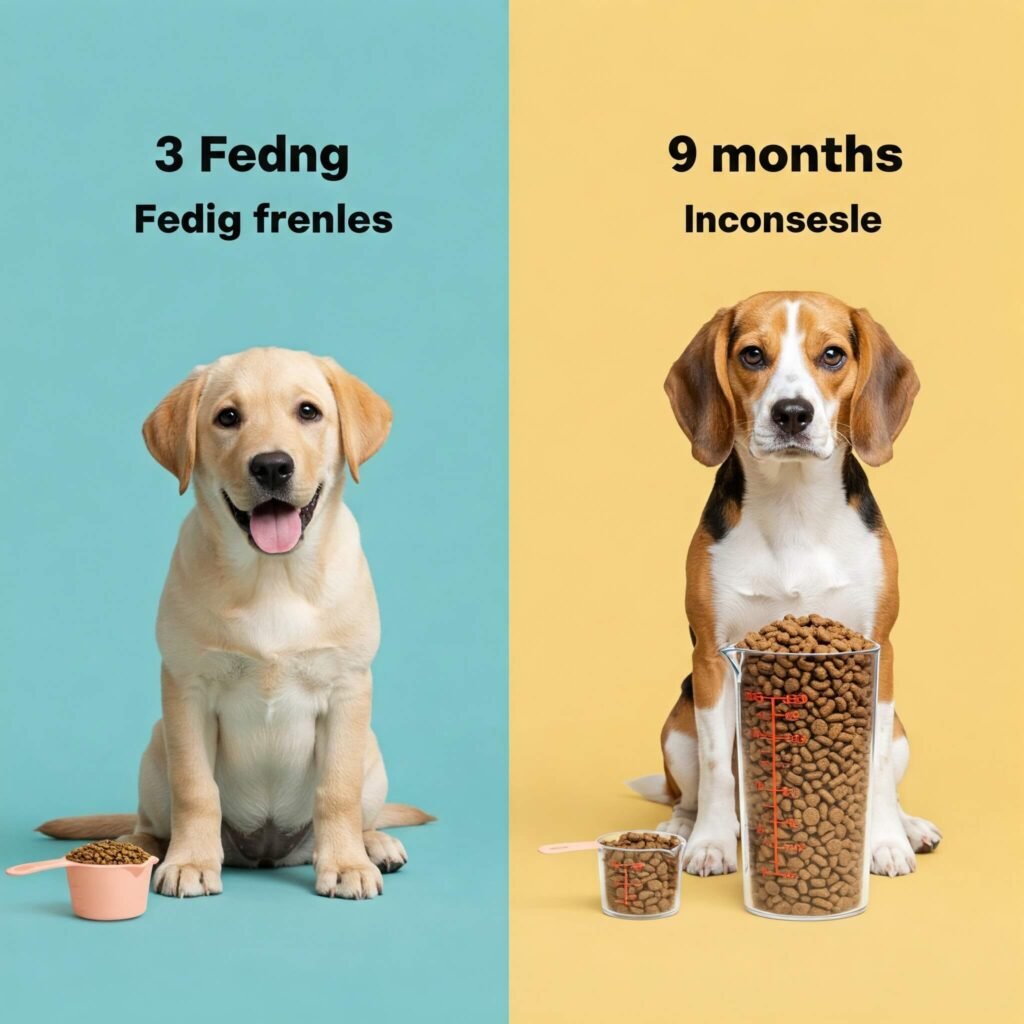Bringing a new puppy home is an incredibly exciting time! Those adorable little paws and boundless energy are sure to fill your life with joy. But along with the cuddles and playtime comes the crucial responsibility of proper nutrition. Knowing what and when to feed your furry friend is paramount for their healthy growth and development. This comprehensive guide will walk you through a detailed puppy feeding schedule by age, ensuring your little one gets the right nutrients at the right times.
Why a Consistent Puppy Feeding Schedule Matters
Just like human babies, puppies thrive on routine. A consistent puppy feeding schedule by age helps regulate their digestive system, making them less prone to stomach upset. It also aids in house training, as puppies typically need to relieve themselves shortly after eating. Furthermore, knowing when your puppy eats allows you to monitor their appetite, which can be an early indicator of potential health issues.

Your Puppy Feeding Schedule by Age: A Detailed Breakdown
The amount and frequency of feeding will change significantly as your puppy grows. Here’s a breakdown of a typical puppy feeding schedule by age:
8-12 Weeks Old: Frequent, Small Meals
At this young age, your puppy’s tummy is small, and they need frequent fuel to support their rapid growth.
- What to Feed: High-quality puppy-specific kibble that is specifically formulated for growth. Look for labels that mention “complete and balanced nutrition for puppies.” You can moisten the kibble with warm water to make it easier for them to eat.
- When to Feed: Typically, four meals a day, spaced evenly apart. For example:
- 7:00 AM
- 12:00 PM
- 5:00 PM
- 10:00 PM
- How Much to Feed: Follow the guidelines on your chosen puppy food packaging. These are usually based on your puppy’s current weight and expected adult weight. Your veterinarian can also provide personalized recommendations.
3-6 Months Old: Gradually Reducing Frequency
As your puppy grows, their stomach capacity increases, and you can start to reduce the number of daily meals.
- What to Feed: Continue feeding high-quality puppy kibble. You can gradually transition to dry kibble if you were initially moistening it. Ensure fresh water is always available.
- When to Feed: Reduce to three meals a day. For example:
- 7:00 AM
- 1:00 PM
- 7:00 PM
- How Much to Feed: Continue to follow the guidelines on the food packaging, adjusting the portion size as your puppy gains weight. Monitor their body condition – you should be able to feel their ribs easily but not see them.

6-12 Months Old (and Beyond for Large Breeds): Moving Towards Adulthood
By this stage, most puppies can transition to two meals a day. Larger breeds may take longer to fully mature and might benefit from three smaller meals for a bit longer to prevent bloat.
- What to Feed: You can start to consider transitioning to adult dog food around 12 months for most breeds. For large and giant breeds, this transition might happen closer to 18-24 months. Consult your veterinarian for guidance on the best time to switch.
- When to Feed: Two meals a day is usually sufficient. For example:
- 8:00 AM
- 6:00 PM
- How Much to Feed: Continue to monitor their body condition and adjust portion sizes as needed. Avoid overfeeding, which can lead to obesity and other health problems.
Important Considerations for Your Puppy Feeding Schedule
- Consistency is Key: Stick to a regular puppy feeding schedule by age as much as possible, even on weekends.
- Fresh Water: Always provide your puppy with access to fresh, clean water.
- Avoid Free-Feeding: Leaving food out all day can make it difficult to monitor your puppy’s appetite and can contribute to picky eating habits.
- Treats in Moderation: While training treats are important, remember that they contribute to your puppy’s daily calorie intake. Account for treats when determining meal sizes.
- No Table Scraps: Human food can be unhealthy and even dangerous for puppies. Avoid giving them table scraps.
- Observe Your Puppy: Pay attention to your puppy’s body language and appetite. If they consistently leave food uneaten or seem overly hungry, consult your veterinarian.
- Transitioning Foods: If you need to switch your puppy’s food, do so gradually over 7-10 days to avoid digestive upset. Mix a small amount of the new food with the old food, gradually increasing 1 the proportion of the new 2 food each day. 1. welcommtheater.com welcommtheater.com 2. bringinglethbridgehome.ca bringinglethbridgehome.ca

Seeking Professional Guidance
Every puppy is unique, and their nutritional needs can vary based on breed, size, activity level, and health. It’s always best to consult with your veterinarian to determine the ideal puppy feeding schedule by age and the most appropriate food for your individual puppy. They can provide personalized recommendations and address any specific concerns you may have.
Outbound Reference Links:
- American Kennel Club (AKC) – [Insert relevant AKC article link about puppy nutrition]
- VCA Animal Hospitals – [Insert relevant VCA Animal Hospitals article link about puppy feeding]
- PetMD – [Insert relevant PetMD article link about puppy feeding schedules]
In conclusion, establishing a consistent and age-appropriate puppy feeding schedule is crucial for your puppy’s health and well-being. By understanding the nutritional needs at each stage of their development and providing high-quality food at regular intervals, you’ll be setting them up for a long and happy life.








































